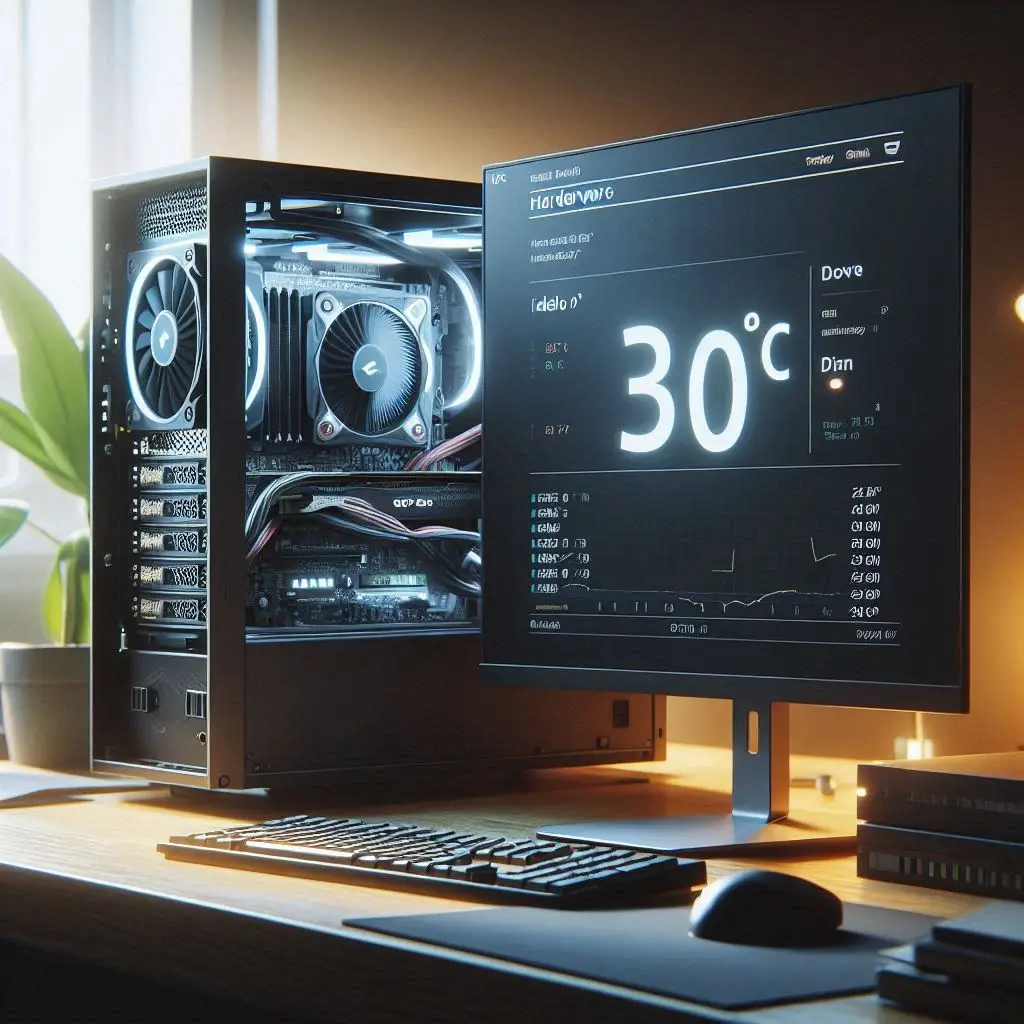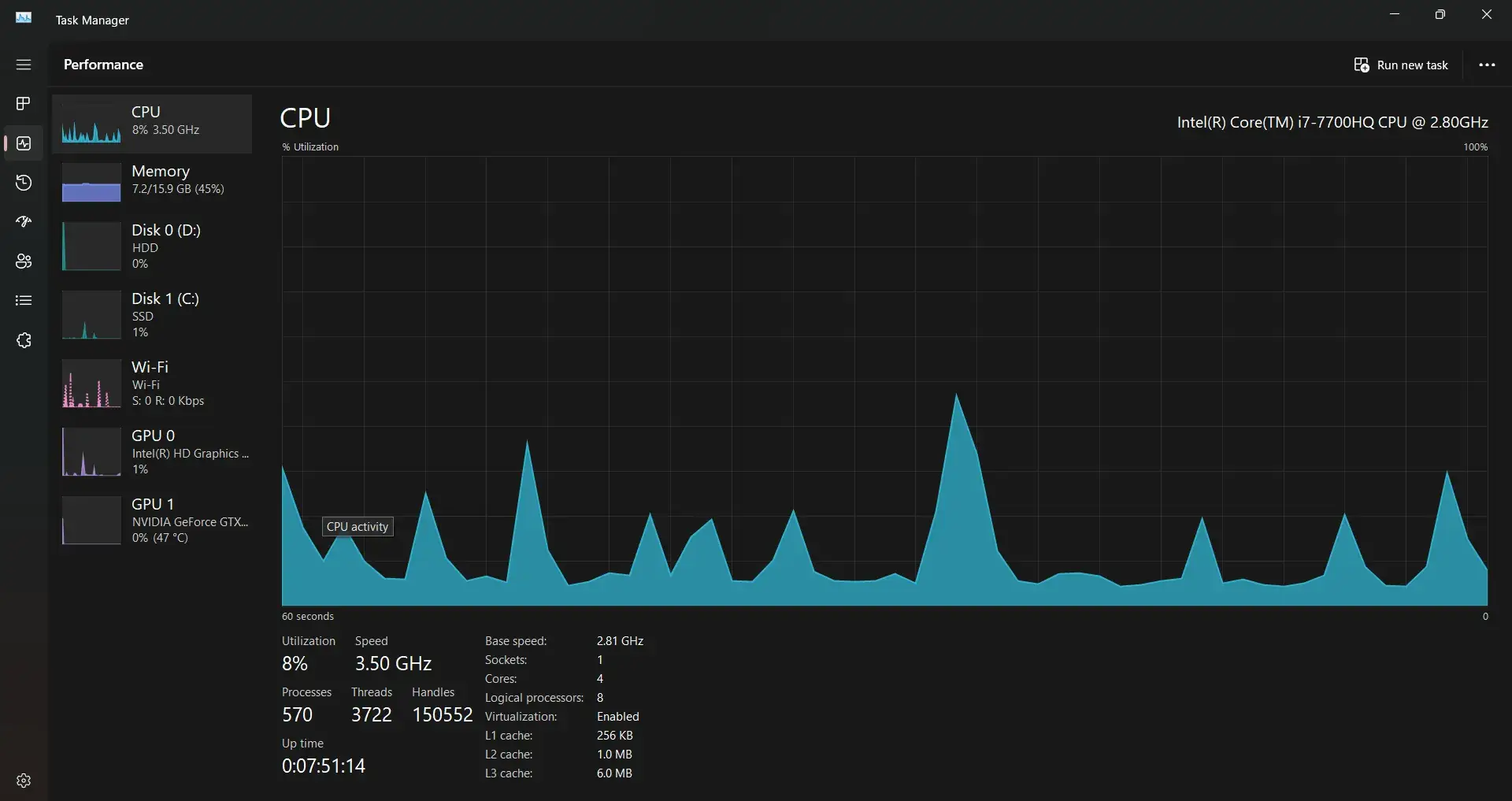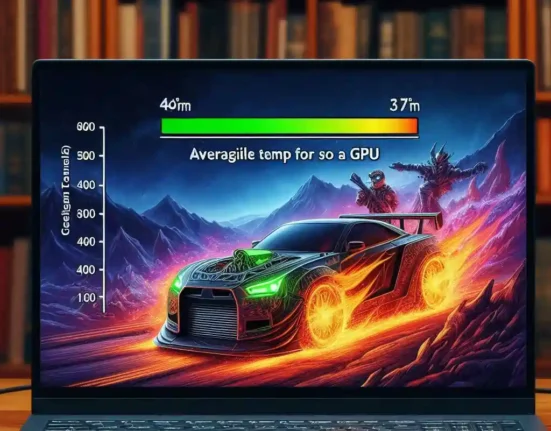When it comes to gaming, working on graphic design, or running applications that use your GPU (Graphics Processing Unit), keeping an eye on your GPU’s temperature is essential. Whether you’re a casual user or a dedicated gamer, understanding what a good GPU idle temp is can help keep your system healthy and prevent potential problems. But what exactly is a GPU idle temperature, and why does it matter?
In this blog, we’ll explore what a good idle temp for GPU is, how you can monitor it, why it matters, and how you can keep your GPU cool.
What Is GPU Idle Temperature?
Your GPU idle temperature refers to the temperature of your GPU when your computer is not performing any heavy tasks like gaming, rendering videos, or running graphic-intensive applications. This is known as the “idle state” of the GPU. Even when idle, your GPU still runs in the background to maintain your display, but it is not working hard.
During this time, the GPU should remain relatively cool. Ideally, a average idle temp for GPU ranges between 30°C to 50°C. This range indicates that your cooling system is working effectively to keep the GPU cool when it’s not under heavy use.
How Good Is 30°C GPU Temp on Idle?

If your GPU idle temp is around 30°C, that’s excellent! This means your system is well-cooled, and there’s no unnecessary heat build-up. A temperature of 30°C is at the lower end of the normal range and suggests that your computer has great cooling or that the room temperature is cool. The lower the temperature, the less stress there is on your GPU, which increases its lifespan.
Why Is Monitoring GPU Idle Temperature Important?
Just like with any other piece of hardware, maintaining an optimal temperature for your GPU is important. High idle temperatures can signal cooling issues and cause long-term damage to your computer’s components. Here’s why monitoring your GPU idle temperature is so important:
- Prevents Overheating: A GPU that runs too hot for too long can experience performance issues, crashes, and even permanent damage.
- Maintains Performance: GPUs that run cooler generally perform better, especially when tackling heavy tasks like gaming or rendering.
- Increases GPU Lifespan: Keeping your GPU temperature under control ensures that it will last longer and work effectively for years to come.
Chart: Why Monitoring GPU Temperature Matters
mathematicaCopy code| Temperature Range | Performance Impact | Long-Term Effects |
|-------------------|-------------------------|------------------------|
| 30°C - 50°C | Optimal performance | No long-term damage |
| 50°C - 70°C | Moderate heat stress | Reduced lifespan |
| Above 70°C | High heat stress | Potential overheating |
| Above 90°C | Overheating, may throttle| Risk of permanent damage|
What Is a Good GPU Idle Temp?

The good GPU idle temp depends on a few factors like the type of GPU, the cooling system, and the room temperature. Here’s a detailed breakdown of what constitutes a good idle temp for GPU:
- 30°C – 50°C: This is the ideal range. If your GPU stays within this temperature range, it’s running cool and efficient.
- 50°C – 60°C: While not ideal, this is still generally acceptable if your ambient room temperature is higher. However, it’s important to monitor it closely.
- Above 60°C: At this point, your GPU is running hot even at idle. This could indicate poor airflow, dust build-up, or cooling system failure.
Factors That Influence GPU Idle Temperature:
- Ambient Temperature: If the room your computer is in is hot, it will affect the GPU’s idle temperature.
- Case Airflow: Good airflow inside your computer case is essential for keeping all the components cool.
- Cooling System: Your GPU’s cooling system (air cooling or liquid cooling) plays a big role in maintaining a low idle temp.
- Dust Accumulation: Dust inside your PC can block airflow and lead to higher temperatures.
How to Check Your GPU Idle Temperature
You can easily check your GPU idle temperature using a variety of tools. Many GPUs come with built-in monitoring software, but there are also third-party applications that offer more advanced features. Below are some easy ways to monitor your GPU idle temp:
1. Built-In Tools
- NVIDIA Control Panel: For NVIDIA GPUs, the control panel provides information about the GPU, including the temperature. To check your idle temp, simply open the control panel and look for the temperature reading.
- AMD Radeon Settings: Similarly, for AMD users, Radeon settings will display your GPU temperature.
2. Third-Party Tools
If you want more detailed information, several popular third-party tools that can give you an in-depth look at your GPU temperature.
- MSI Afterburner: This is one of the most popular GPU monitoring and overclocking tools. It allows you to see your GPU idle temp and adjust fan speeds to improve cooling.
- HWMonitor: This tool gives you real-time temperature readings for not just your GPU but your entire system, including your CPU and motherboard.
- GPU-Z: A lightweight tool designed specifically for monitoring GPU information. It shows everything from the temperature to the fan speed and voltage.
How to Use MSI Afterburner to Monitor GPU Temps:
- Download and install MSI Afterburner.
- Open the application and look at the dashboard where your GPU temperature will be displayed.
- The good GPU idle temp should be visible. Keep an eye on it while your computer is not performing any heavy tasks.
Causes of High GPU Idle Temperature
If your GPU idle temp is higher than 50°C, it could be due to several factors. Here are some of the most common causes of high idle temperatures:
- Poor Case Airflow: Without proper airflow, heat can’t escape your computer, causing temperatures to rise.
- Dust Build-Up: Over time, dust can gather inside your PC, blocking the airflow to your GPU and causing it to heat up.
- Overclocking: If you’ve overclocked your GPU, it may be running at a higher temperature, even at idle.
- Old or Faulty Fans: Cooling fans might not be functioning well, which can cause your GPU to overheat.
- Thermal Paste Drying Out: Thermal paste helps transfer heat from the GPU to its cooler. Over time, this paste can dry out, reducing its effectiveness.
How to Lower Your GPU Idle Temperature
If your GPU idle temp is running higher than it should, here are some tips to bring it back down:
- Improve Airflow: Make sure your computer case has good airflow. Adding extra fans can help move air in and out of the case.
- Clean Dust from Your PC: Use a can of compressed air to blow out dust from your GPU, fans, and other components inside your PC.
- Reapply Thermal Paste: If your GPU is several years old, you might need to reapply thermal paste to improve heat transfer.
- Adjust Fan Speeds: Use tools like MSI Afterburner to manually adjust your fan speeds and improve cooling.
- Consider Liquid Cooling: If you have a high-performance GPU, switching to liquid cooling can dramatically reduce its temperature.
Should You Be Worried About High GPU Idle Temps?
If your GPU idle temp is consistently above 60°C, it’s time to take action. High idle temperatures can indicate that something is wrong with your cooling system, and leaving it unchecked can lead to long-term damage. Here’s when to worry:
- Above 60°C: If your GPU idle temp is over 60°C, it might be a sign of poor cooling. Check your fans, clean out dust, and consider improving case airflow.
- Above 70°C: This is concerning. Your GPU is running too hot, even when idle. Immediate action is needed to prevent permanent damage.
- Above 90°C: At this point, your GPU is likely throttling, meaning it’s reducing its performance to prevent overheating. This is dangerous and could result in permanent hardware damage.
Conclusion
Maintaining a good GPU idle temp is crucial for the longevity and performance of your graphics card. A GPU that idles between 30°C and 50°C is healthy, with 30°C being an especially ideal temperature. Monitoring your GPU temperature regularly using tools like MSI Afterburner or GPU-Z can help you spot any issues before they lead to bigger problems.
If you notice your GPU idle temp creeping up, take action to clean your PC, improve airflow, or consider upgrading your cooling system. By keeping your GPU idle temp in check, you’ll ensure a long and productive life for your graphics card!
FAQs on GPU Idle Temps
1. What is a good idle GPU temperature?
A good idle GPU temperature is typically between 30°C and 50°C. Anything within this range is considered safe and indicates that your graphics card is functioning efficiently when not under heavy load.
2. Is 30°C a good GPU temp on idle?
Yes, 30°C is an excellent idle temperature for a GPU. It shows that the card is staying cool, which helps prolong its lifespan and performance.
3. What should I do if my GPU idle temp is above 50°C?
If your GPU idle temp is above 50°C, check for dust accumulation, ensure your PC has proper airflow, and verify that the cooling fans are working. You may also want to consider adjusting fan speeds or upgrading your cooling system.
4. How can I monitor my GPU temperature?
You can monitor your GPU temperature using tools like MSI Afterburner, HWMonitor, GPU-Z, or the built-in control panels from NVIDIA or AMD. These tools give real-time temperature readings and other system stats.
5. Why does my GPU temperature matter?
Keeping your GPU within a good idle temp range helps maintain its performance and prevent overheating, which can lead to hardware damage or reduced lifespan.
6. How often should I check my GPU temperature?
It’s a good idea to check your GPU temperature regularly, especially after playing games or running resource-intensive applications. If your system feels slow or the fans are louder than usual, it’s worth checking the temperature.
7. Can a high idle temperature damage my GPU?
Prolonged high idle temperatures (above 60°C) can degrade your GPU over time, leading to reduced performance or even failure. Monitoring and maintaining a good idle temp is crucial for long-term health.
8. What is the ideal GPU temperature during gaming?
During gaming or other high-performance tasks, GPU temperatures typically range from 60°C to 85°C. Anything above 90°C may indicate overheating issues.
9. Does overclocking affect GPU idle temperature?
Yes, overclocking can increase both the GPU idle temp and load temperatures. Ensure adequate cooling is in place if you plan on overclocking your GPU.
10. Is it normal for my GPU temperature to fluctuate at idle?
Yes, slight fluctuations in your GPU idle temp are normal. The temperature may rise slightly if your system is running background processes or applications, but it should stabilize within a safe range (30°C-50°C).
11. How can I lower my GPU idle temperature?
To lower your GPU idle temp, try these steps:
- Clean the dust from your PC and fans.
- Improve airflow by adding more fans or rearranging components.
- Check that your GPU’s cooling system (heatsink and fans) is functioning properly.
- Consider reapplying thermal paste if the GPU is older.
12. Can ambient room temperature affect GPU idle temps?
Yes, the temperature of your room can impact your GPU’s idle temperature. A warmer room can cause your GPU idle temp to be higher than usual, while a cooler room can help keep it lower.
13. What’s the difference between GPU idle and load temperature?
- GPU Idle Temp: The temperature of your GPU when it’s not actively being used for intensive tasks, like gaming or video editing. Ideally, this should be between 30°C and 50°C.
- GPU Load Temp: The temperature of your GPU while running demanding applications. Safe ranges are typically 60°C to 85°C, depending on the card and workload.
14. Is it okay if my GPU idle temp is under 30°C?
Yes, if your GPU idle temp is under 30°C, that’s perfectly fine and actually quite good. It indicates that your cooling system is efficient, and your card is staying very cool when idle.
15. Does GPU fan speed affect idle temperature?
Yes, your GPU fan speed directly impacts its temperature. If your idle temp is high, increasing the fan speed (manually through software like MSI Afterburner) can help lower it. However, setting fans too high during idle can result in unnecessary noise.
16. Can poor cable management affect GPU idle temperature?
Yes, poor cable management can obstruct airflow inside your PC case, leading to higher GPU idle temps. Ensuring proper cable routing can help improve airflow and lower temperatures.
17. Is liquid cooling necessary for lowering idle GPU temps?
Liquid cooling is generally more effective for load temperatures, but it can help lower idle temperatures if your GPU is running hot. However, for most users, air cooling is sufficient for maintaining a good idle temp for GPU.
18. Should I worry if my GPU temp rises slightly after startup?
No, it’s normal for your GPU idle temp to rise a bit after startup as background processes begin to run. As long as it stays within the 30°C-50°C range when idle, there’s no need to worry.
19. Can upgrading my case improve GPU idle temperature?
Yes, upgrading to a case with better airflow or more fan slots can significantly improve your GPU idle temp by allowing more cool air to reach the graphics card.
20. Is there a way to set an alert for high GPU temperatures?
Yes, tools like MSI Afterburner and HWMonitor allow you to set alerts if your GPU temperature exceeds a certain limit. This helps you take immediate action if your GPU idle temp or load temp gets too high




Leave feedback about this